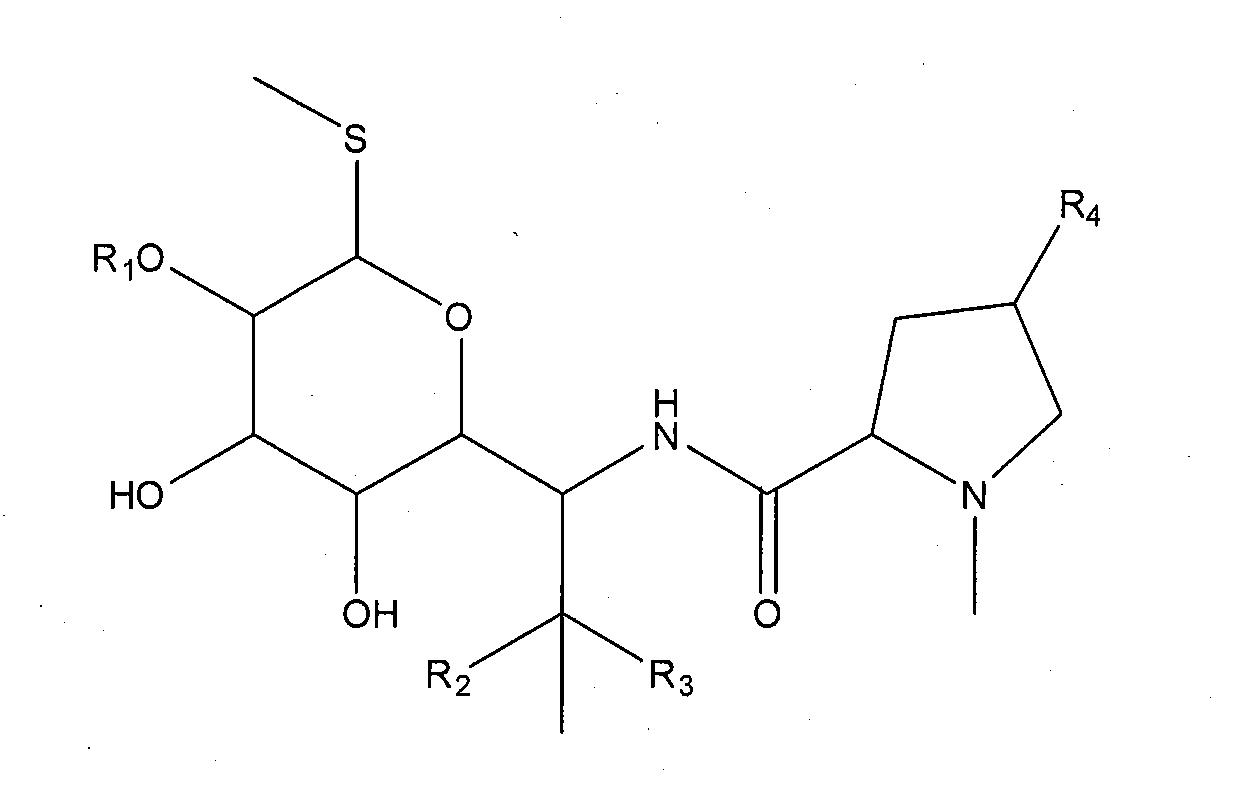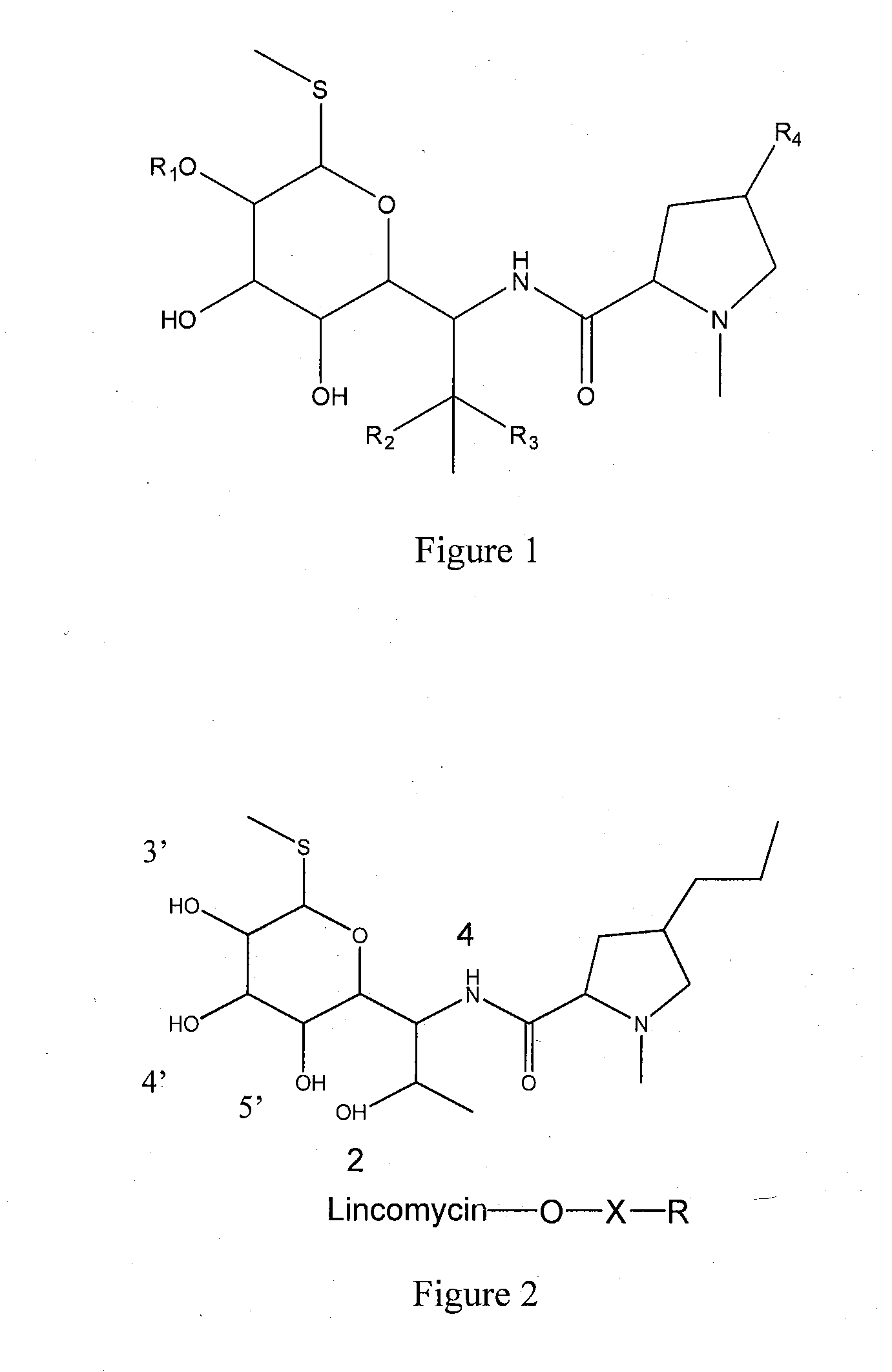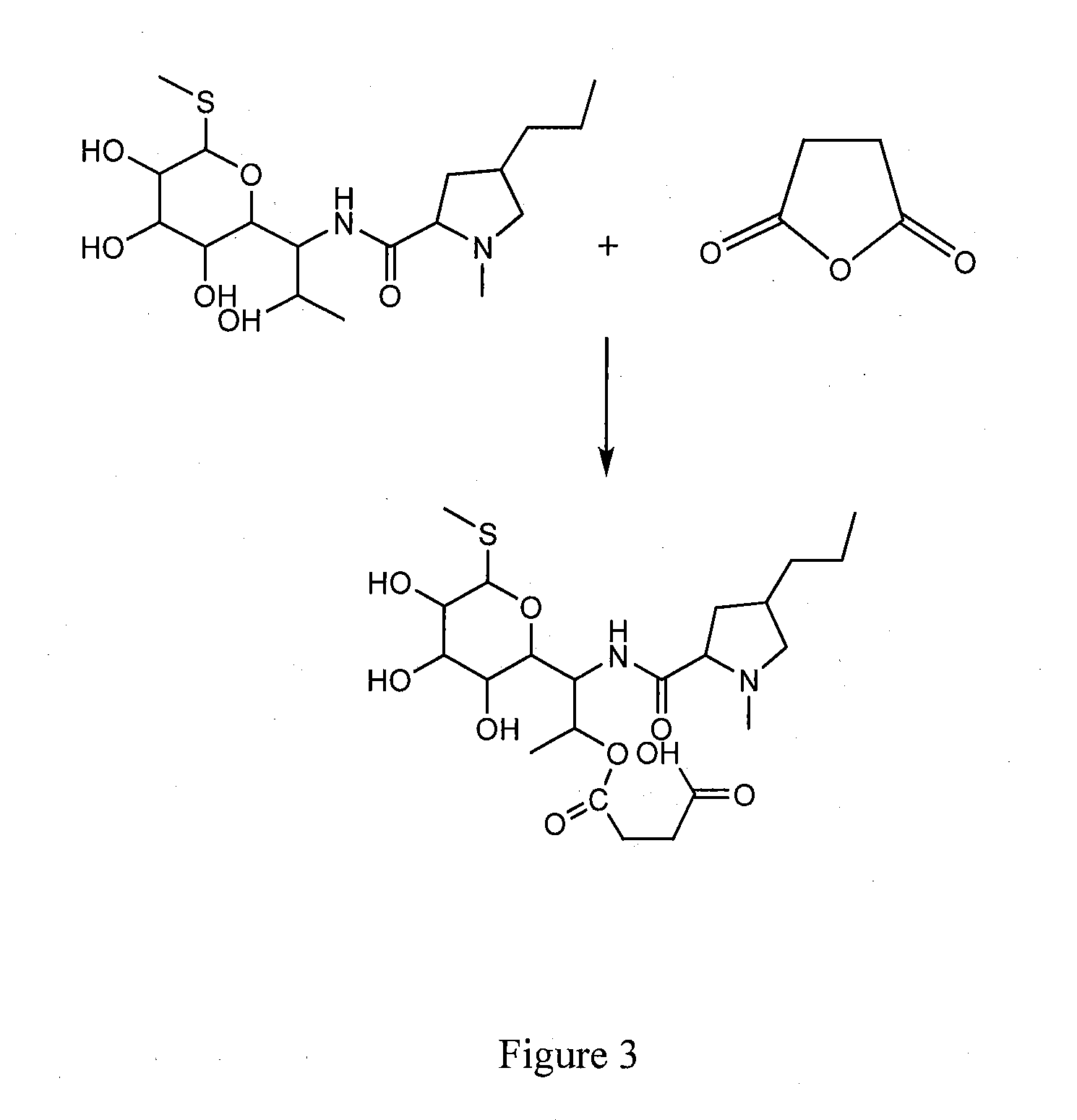Elisa kit for detecting lincomycin
- Summary
- Abstract
- Description
- Claims
- Application Information
AI Technical Summary
Benefits of technology
Problems solved by technology
Method used
Image
Examples
example 1
Preparation of the Components of the Kit
[0066]1. Synthesis of antigen
[0067]a. Synthesis of Hapten
[0068]Lincomycin hapten having carboxyl group is prepared according to succinic anhydride method.
[0069]Hapten LIN-S1 is obtained by the steps of: weighting 2.3 g lincomycin hydrochloride (purchased from Dr Corn, Germany, Cat no. C14635000) and 0.5 g succinic anhydride, placing into a 50 ml round flask, adding anhydrous pyridine till the lincomycin hydrochloride and succinic anhydride are completely dissolved, and reacting at 70° C. for 24 h under stirring; removing the solvent via distillation under reduced pressure after the reaction is finished, washing the residues with acetone for several times and then with 2-3 times volume of ethyl acetate / n-hexane (2:1, v / v), adequately vibrating, and crystallizing to obtain the lincomycin hemisuccinate hapten.
[0070]The hapten LIN-S2 is obtained by the steps of:
[0071]Weighting 1.59 g lincomycin, placing into a 25 ml round flask, adding 6 ml N,N-di...
example 2
Construction of ELISA Kit for Detecting Lincomycin
[0107]The ELISA kit for detecting lincomycin is constructed to comprise the following components:[0108](1) an ELISA plate coated with lincomycin-conjugated antigen;[0109](2) horseradish peroxidase-labeled goat-anti-mouse anti-antibody;[0110](3) working solution of lincomycin monoclonal antibody;[0111](4) 6 vials of lincomycin standard solution at concentrations of 0 μg / L, 0.2 μg / L, 0.6 μg / L, 1.8 μg / L, 5.4 μg / L and 16.2 μg / L, respectively;[0112](5) color developing solution consisting of developing solution A and developing solution B, wherein the developing solution A is carbamide peroxide solution, and the developing solution B is tetramethylbenzidine solution;[0113](6) stopping solution: 2 mol / L hydrochloric acid;[0114](7) concentrated washing solution: 0.2 mol / L phosphate buffer (pH 7.4) containing 1.0 wt % Tween-20 and 0.5 wt % thiomersal; and[0115](8) concentrated redissolving solution: 0.2 mol / L phosphate buffer (pH 7.4) contai...
example 3
Detection of Lincomycin in Real Samples
[0116]1. Pre-treatment of the samples
[0117]a) Preparation of the Solutions
[0118]0.015 mol / L hydrochloric acid solution (special use for animal tissue samples) is prepared by adding 1.25 ml concentrated hydrochloric acid solution into a container containing deionized water, and fixing the volume to 1 L.
[0119]Methanol-hydrochloric acid solution (special for animal tissue samples) is prepared by uniformly mixing 10 ml methanol and 60 ml 0.015 mol / L hydrochloric acid solution.
[0120]Redissolving solution is prepared by diluting the concentrated redissolving solution with deionized water at a volume ratio of 1:1 and mixing for further use.
[0121]b) Animal Tissues (Chicken Meat, Chicken Liver, Pork Meat, Pork Liver, etc.)
[0122]The animal tissues are pre-treated by adding 2.0 g homogenized sample into a 50 ml polystyrene centrifugal tube, adding 10 mL methanol-hydrochloric acid solution, vibrating for 5 min, centrifuging at >3000 g for 5 min at room tem...
PUM
| Property | Measurement | Unit |
|---|---|---|
| Acidity | aaaaa | aaaaa |
| Acidity | aaaaa | aaaaa |
| Dissociation constant | aaaaa | aaaaa |
Abstract
Description
Claims
Application Information
 Login to View More
Login to View More - R&D
- Intellectual Property
- Life Sciences
- Materials
- Tech Scout
- Unparalleled Data Quality
- Higher Quality Content
- 60% Fewer Hallucinations
Browse by: Latest US Patents, China's latest patents, Technical Efficacy Thesaurus, Application Domain, Technology Topic, Popular Technical Reports.
© 2025 PatSnap. All rights reserved.Legal|Privacy policy|Modern Slavery Act Transparency Statement|Sitemap|About US| Contact US: help@patsnap.com



